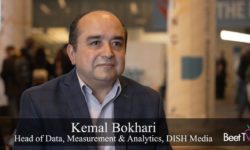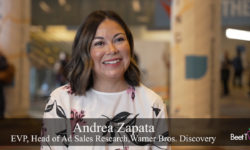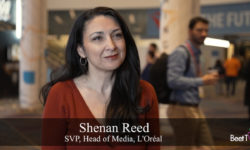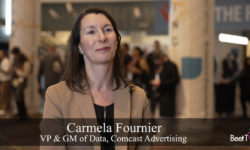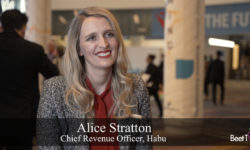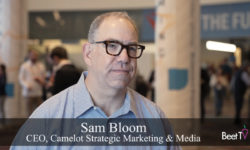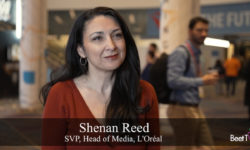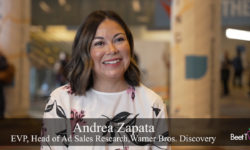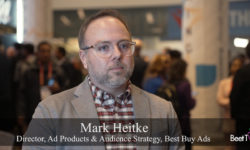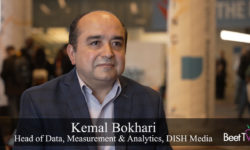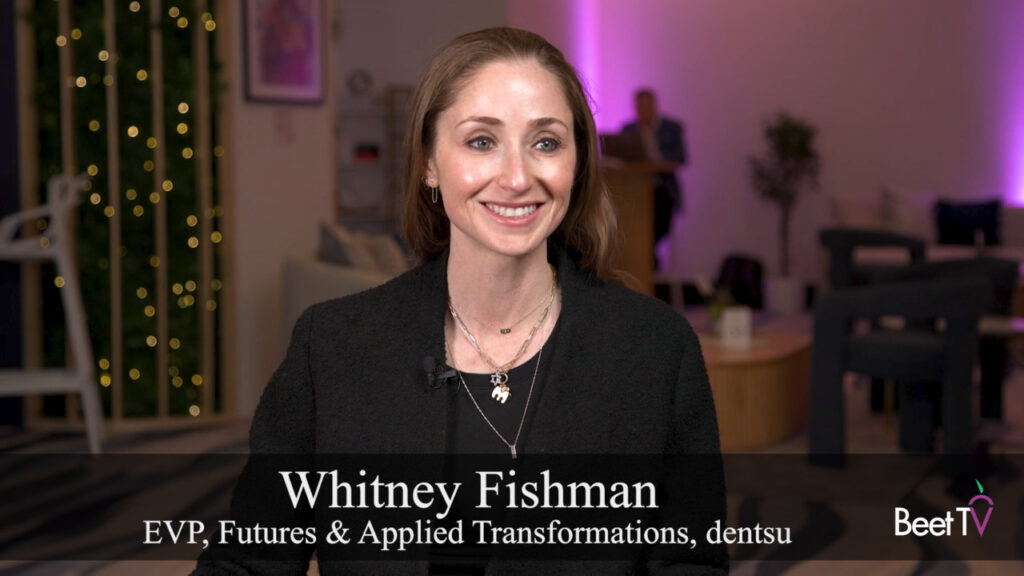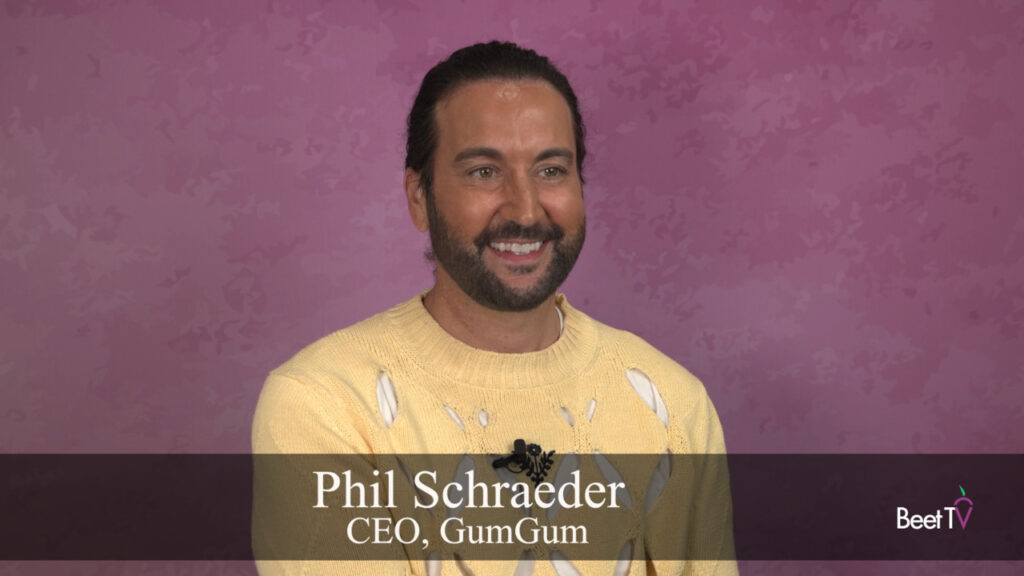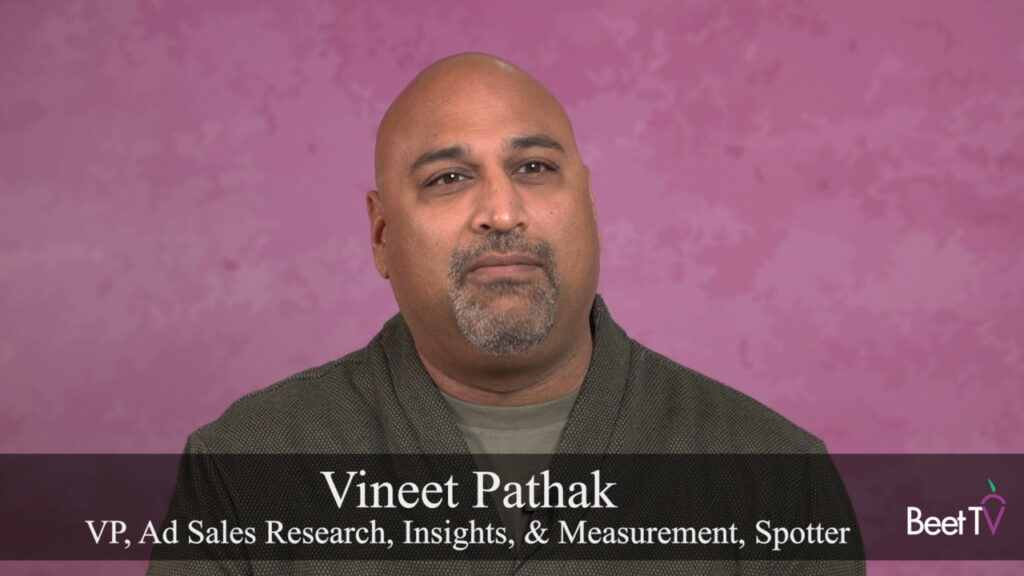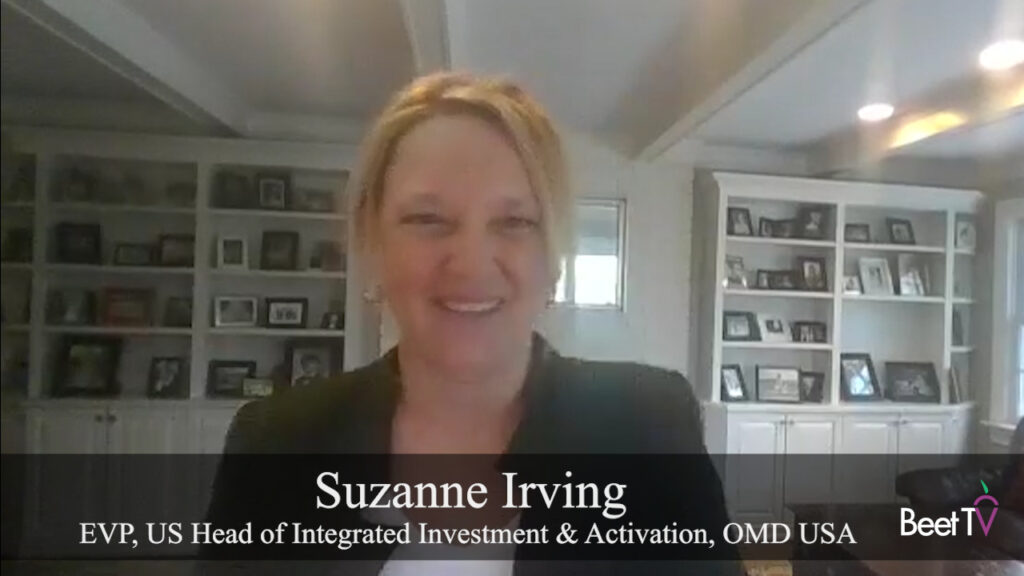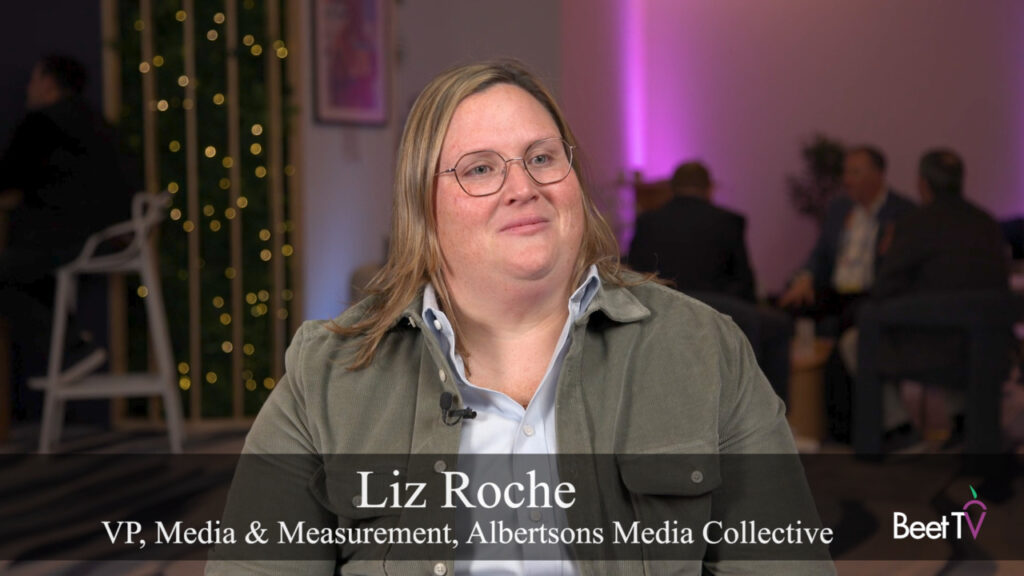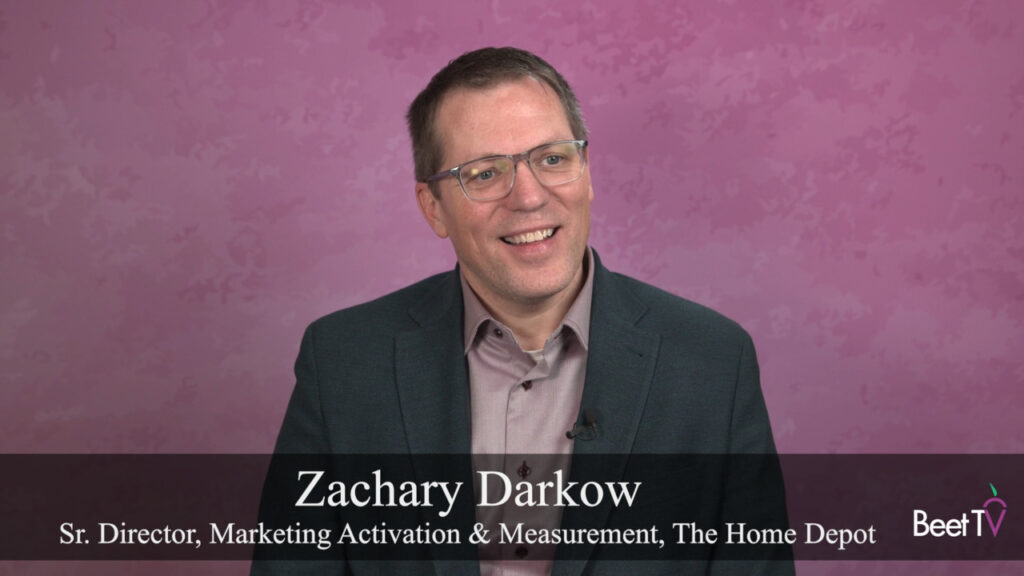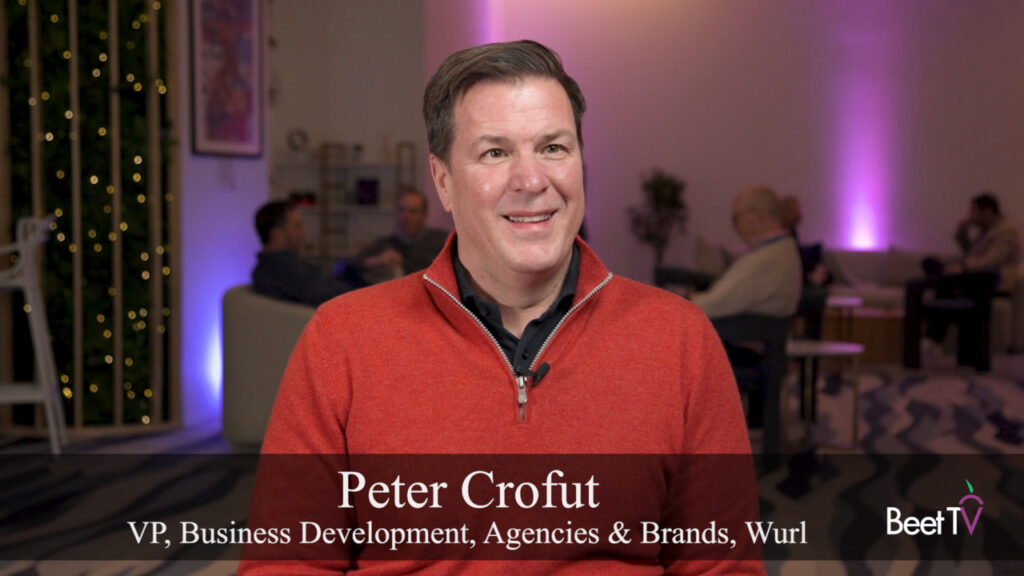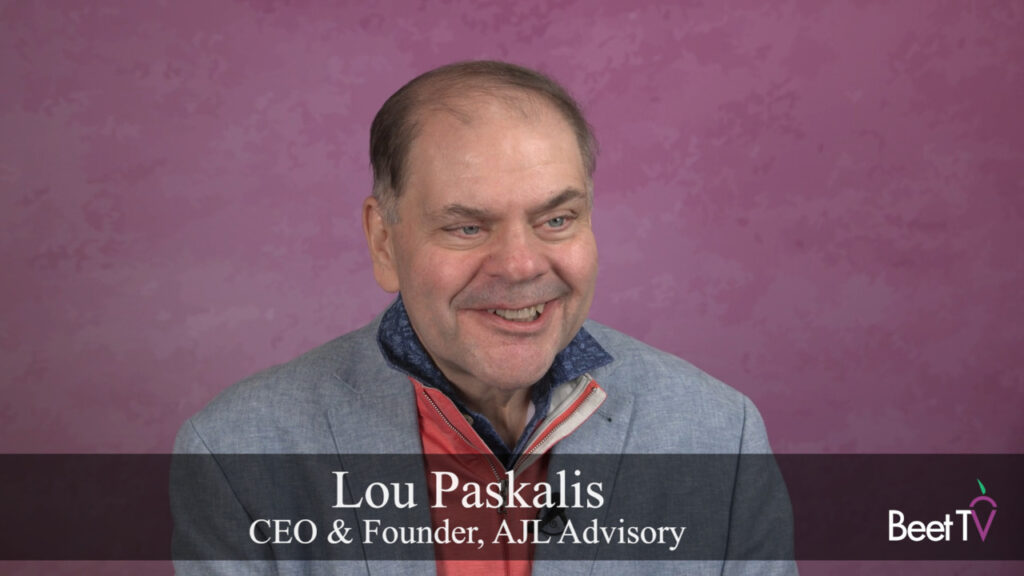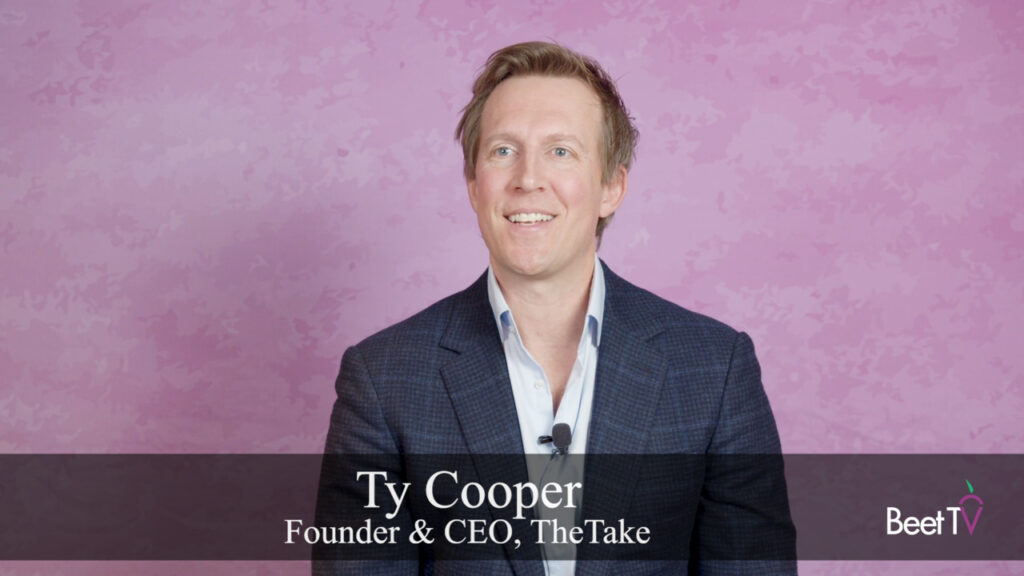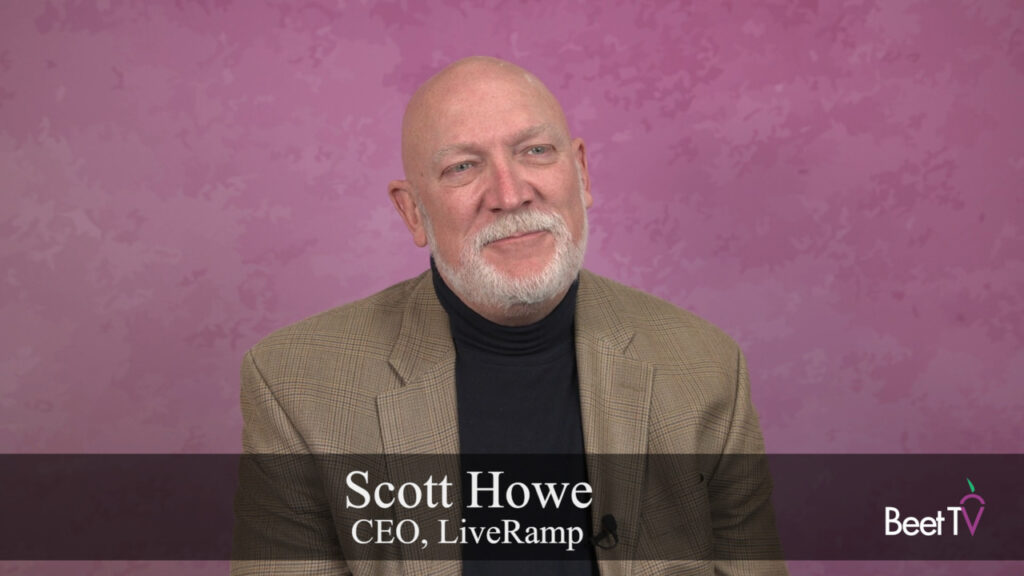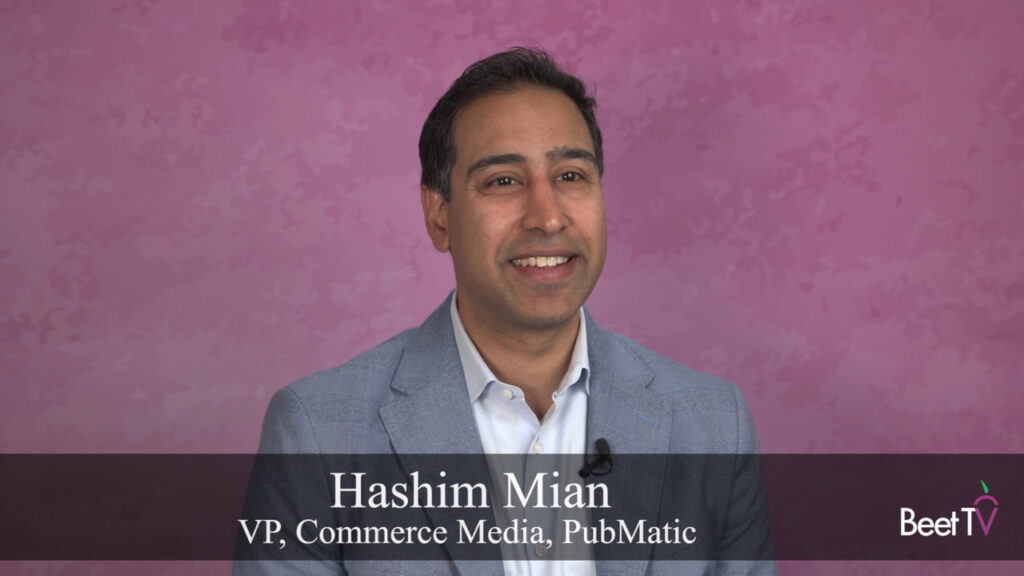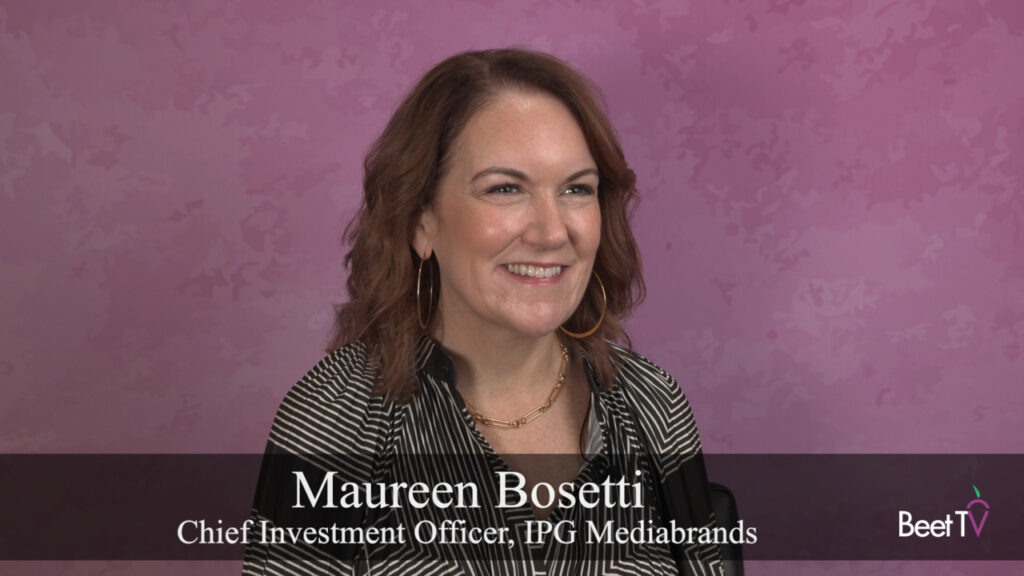LAS VEGAS — For a platform that majors on interior-design photography, there are a great many rooms on Pinterest.
But Carrie Sweeney, Industry Lead, Retail, Pinterest, is currently fixated on this season’s other hottest trend – data clean room software that enables privacy-compliant media partner collaboration.
In this video interview with Beet.TV, Sweeney explains why Pinterest is leaning into the new tech to support ad partners.
Cleaning house
Clean room technology allows media buyers and sellers to match their consumer data without directly sharing it with each other – something which could breach the growing number of privacy laws.
At CES, Pinterest announced it would partner with LiveRamp to pilot clean rooms for select advertising partners. Grocery retailer Albertsons will be its first advertiser using this new solution, to support the Albertsons Media Collective.
“We are a huge believer in it,” says Sweeney. “We’ve been playing in this retail media space and data sharing space really since 2016. We were one of the first ones to start talking to a couple of the big retail media networks about it.
“We feel like clean rooms is really just a super-safe, compliant, flexible way for publishers like us to share exposure data and for retailers to share their consumer data in a really data-driven, privacy-compliant way.
“So we’re thrilled that it seems to be picking up steam this year and we are continuing to announce integrations with different clean rooms throughout this year.”
Use cases
So, how exactly is Pinterest using clean rooms? So far, it’s about audience matching and closed loop reporting.
Sweeney says the space has evolved from a few years ago, when she remembers clients white-boarding the software and when only big tech companies were able to offer the tech.
Now Pinterest is using the software with Albertsons. Beyond Albertsons, Pinterest is also talking to other RMNs about various partnerships. Target’s Roundel was an early Pinterest partner.
https://www.pinterest.co.uk/target/
“They heard loud and clear from their CPG partners, their suppliers, their vendors – ‘we want to know where our dollars go, who’s buying us what ad dollars (are) spent’,” Sweeney says.
“Target realised we have huge wealth of first party data on our site. We have millions of visitors. We can come up with some pretty interesting margins separate from selling things on shelves if we sell ad space.
“When we fill all those owned and operated ad slots that’s where we have about 80%, 90% match rates with big retailers like Target, because pinners are shoppers.
“So we said, ‘Hey, you can send them off-platform to us. You’ll have this high match rate. You’ll still get a targeting data fee from the brand. The brand will get unprecedented closed loop reporting. They’ll see exactly who is exposed to an ad on Pinterest and then who bought something on Target and you can make sure that ad really did something. So everyone wins.”
Future view
Clean rooms enable advertisers to share data with their partners in a secure environment.
Use of clean room technology is expected to increase across various industries, including media and advertising. This is due to the growing importance of protecting sensitive data and adhering to privacy regulations.
Sweeney suggests companies are getting smarter about how to assess the relative merits of the vendors who are now offering the tech.
https://www.pinterest.co.uk/lemishine/lemi-show-you-a-clean-room/
You’re watching ‘Clean Rooms: Collaboration Goes Mainstream,’ a Beet.TV Leadership Series produced at CES 2023, presented by Habu. For more videos from this series, please visit this page. For all of our coverage from CES 2023, please click here.






